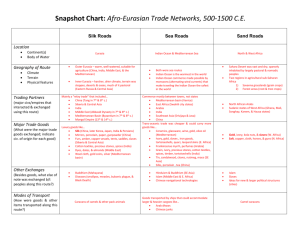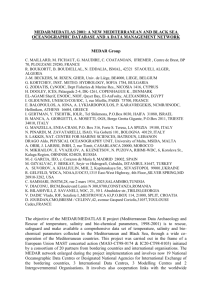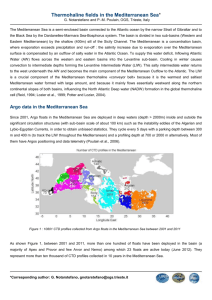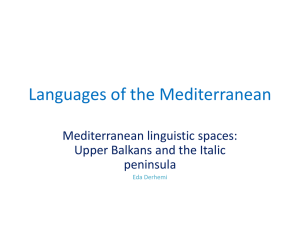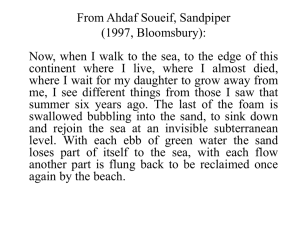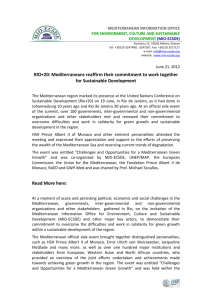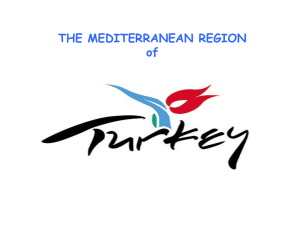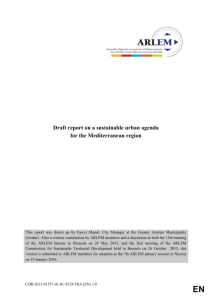doc
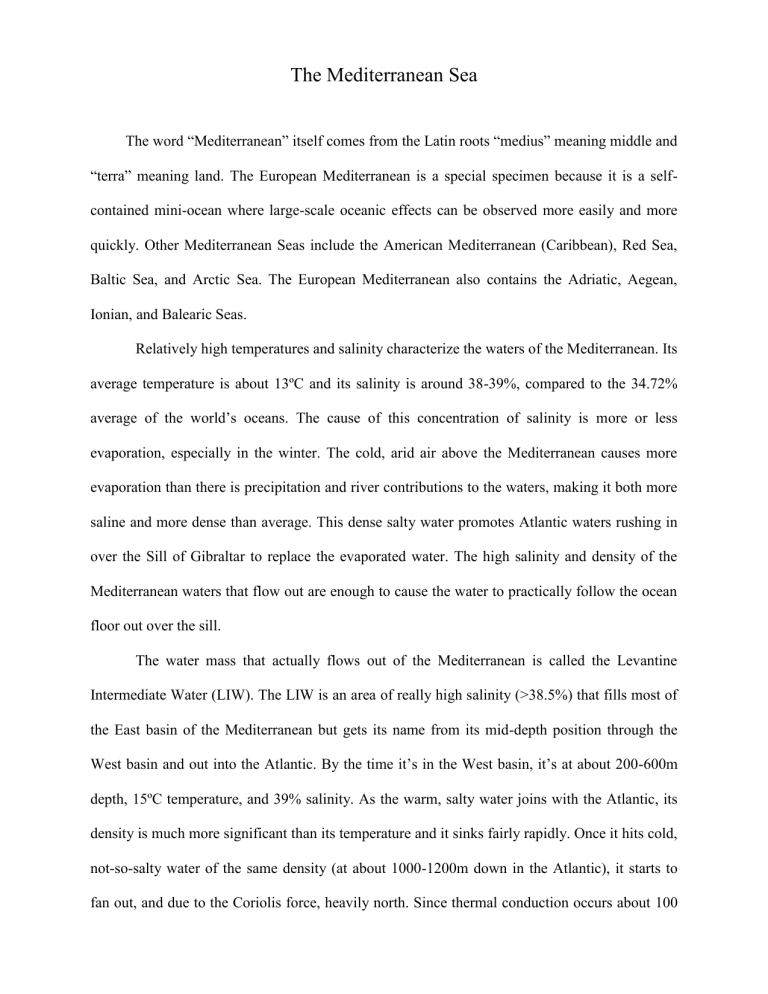
The Mediterranean Sea
The word “Mediterranean” itself comes from the Latin roots “medius” meaning middle and
“terra” meaning land. The European Mediterranean is a special specimen because it is a selfcontained mini-ocean where large-scale oceanic effects can be observed more easily and more quickly. Other Mediterranean Seas include the American Mediterranean (Caribbean), Red Sea,
Baltic Sea, and Arctic Sea. The European Mediterranean also contains the Adriatic, Aegean,
Ionian, and Balearic Seas.
Relatively high temperatures and salinity characterize the waters of the Mediterranean. Its average temperature is about 13ºC and its salinity is around 38-39%, compared to the 34.72% average of the world’s oceans. The cause of this concentration of salinity is more or less evaporation, especially in the winter. The cold, arid air above the Mediterranean causes more evaporation than there is precipitation and river contributions to the waters, making it both more saline and more dense than average. This dense salty water promotes Atlantic waters rushing in over the Sill of Gibraltar to replace the evaporated water. The high salinity and density of the
Mediterranean waters that flow out are enough to cause the water to practically follow the ocean floor out over the sill.
The water mass that actually flows out of the Mediterranean is called the Levantine
Intermediate Water (LIW). The LIW is an area of really high salinity (>38.5%) that fills most of the East basin of the Mediterranean but gets its name from its mid-depth position through the
West basin and out into the Atlantic. By the time it’s in the West basin, it’s at about 200-600m depth, 15ºC temperature, and 39% salinity. As the warm, salty water joins with the Atlantic, its density is much more significant than its temperature and it sinks fairly rapidly. Once it hits cold, not-so-salty water of the same density (at about 1000-1200m down in the Atlantic), it starts to fan out, and due to the Coriolis force, heavily north. Since thermal conduction occurs about 100
times faster than the molecular diffusion of salinity, the hot LIW starts flowing down little chimney-like shoots, earning this phenomenon the name “salt fingers” as the saline water is transferred during conduction.
Most Mediterranean charts and graphs will be labeled as done in the winter. This is because, as noted earlier, winter in the Mediterranean is when the properties of the sea are most extreme. Intense cooling and unusually high evaporation due to the cold, dry continental winds increase the surface mass and encourage vertical mixing, leaving the Eastern basin very uniform in salinity and pretty uniform in temperature.
Current research examining the circulation within the Mediterranean is “Evolution of dynamics in the eastern Mediterranean affecting water mass structures and properties in the
Ionian and Adriatic Seas” by Beniamino B. Manca, Giorgio Budillon, Paolo Scrazzato, and
Laura Ursella published in the Journal of Geophysical Research , September 2003. The basic premise is that an extended dry spell and exceptionally cold winters over the Aegean Sea in late
‘80s altered the thermohaline circulation of the Eastern Mediterranean through the mid-’90s. By examining data from the late ‘90s and collecting some of their own, these researchers claim that the thermohaline circulation is reestablishing patterns similar to those before the Eastern
Mediterranean Transient. They argue that during the transient more Atlantic water flowing into the Adriatic and more dense water from the Aegean due to cold winters and a dry spell was affecting thermohaline circulation. One further conclusion is that the increase of salt in the
Ionian and Levantine basins is unusual and warrants further study, especially since it invites the possibility of overturning the deep layer. The researchers are concerned with the environmental and biological impact that may have. This article provides even more evidence that the
Mediterranean is a great oceanographic specimen because it is large enough to represent phenomenon of the open ocean, but it’s small enough to allow ten-year-studies to identify major changes.
